An understanding of food and wine pairing will make your meals much more fun as well as impressing your dinner guests. Read on for a few pointers but there’s a lot to understand so take a course if you can. George Brown College, Nancy Maclean and The Wine Sisters run food and wine pairing courses.
Matching Principles
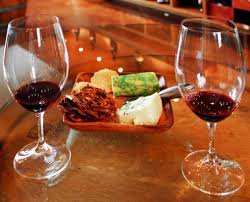 Generally, food has more impact on the taste of a wine than the other way round so you should first look at the the flavours found in a dish (sweet, sour, bitter, salty, fat, umami, etc.) and then select a wine that complements them. Foods that are acidic or salty are generally easier to pair. Serve acidic wines with salty food, as there are no salty wines. However, don’t match a bitter wine with bitter food as the bitterness compounds. Match it with fatty food instead. Tannins pair well with proteins and fats which offset their astringency and bitterness. Red wines with plenty of tannin are good with grilled meats as the bitterness of the tannin complements the iron in the meat. They are not very good with fish as they will induce a metallic taste.
Generally, food has more impact on the taste of a wine than the other way round so you should first look at the the flavours found in a dish (sweet, sour, bitter, salty, fat, umami, etc.) and then select a wine that complements them. Foods that are acidic or salty are generally easier to pair. Serve acidic wines with salty food, as there are no salty wines. However, don’t match a bitter wine with bitter food as the bitterness compounds. Match it with fatty food instead. Tannins pair well with proteins and fats which offset their astringency and bitterness. Red wines with plenty of tannin are good with grilled meats as the bitterness of the tannin complements the iron in the meat. They are not very good with fish as they will induce a metallic taste.
 The old rule of white wines with white meats and red wines with red meats is still a good concept but doesn’t always apply and is overly simplistic. A better approach is to match the flavour intensity of the meal and the wine so that neither overpowers the other e.g. serve a light bodied white such as a Sauvignon Blanc or Muscadet with fish cooked in butter; serve a full bodied white such as a Chardonnay or a light bodied red, say a pinot noir or a gamay, with a stronger flavoured fish dish such as tuna in a cassis sauce; and serve a full bodied red with grilled steak. Another way of looking at this is to match the wine with the sauce rather than the protein.
The old rule of white wines with white meats and red wines with red meats is still a good concept but doesn’t always apply and is overly simplistic. A better approach is to match the flavour intensity of the meal and the wine so that neither overpowers the other e.g. serve a light bodied white such as a Sauvignon Blanc or Muscadet with fish cooked in butter; serve a full bodied white such as a Chardonnay or a light bodied red, say a pinot noir or a gamay, with a stronger flavoured fish dish such as tuna in a cassis sauce; and serve a full bodied red with grilled steak. Another way of looking at this is to match the wine with the sauce rather than the protein.
When the steak is barbecued, the sauces and seasonings are particularly important. Popular marinades tend to be sweet and spicy or sweet and sour and can have a real kick to them. Full bodied and fruity reds with lower tannins are what you want so try a Nero D’Avola from Sicily. Malbecs, Syrah/Shiraz and Merlot should also work. Don’t pick a high tannin or high alcohol wine with hot sauces or chili peppers as the tannins and alcohol will get accentuated.
A dry wine can taste unpleasantly acidic with dishes containing sugar so make sure a dessert wine is a bit sweeter than the dessert itself and don’t pair a dry champagne with wedding cake. Pick an off-dry or sweet sparkling wine instead.
Don’t serve wine with salads due to their vinegar component. For spicy food, try low-alcohol, fruity and off dry wines. A Gewurztraminer can work well because of its own spiciness. Don’t put grapes on the cheeseboard as they are sweet and are therefore unlikely to go with the wines you have chosen for dinner. Instead, offer savoury, smoky or salty appetisers.
Red wines generally don’t work well with cheese as tannins and dairy will clash. Also, there isn’t enough acidity in a red wine to deal with the fat in cheese. For more on this topic, a team of molecular biologists and computer scientists from the University of Toronto has founded wineandcheesemap.com, a website and app that features nearly 1,000 wine and cheese pairings. Read the CBC News article first for an overview on how it works.
Young reds are often a good choice with medium weight dishes as their natural astringency is tempered by the food flavours. Also, consider pairing the food of a region with its wines e.g. serve a Chianti wine with a rustic Tuscan fare. Other pairings that work well include port with blue cheese, Sauvignon Blanc with goat’s cheese, and Muscadet with oysters. The acidity of the Muscadet cleanses the palate from the oiliness of the oysters.
If it’s Thanksgiving or Christmas and you are wondering what to pair with the turkey, Riesling is the classic white option with Chardonnay as a runner up, and Pinot Noir is the classic red option with a Rioja or Chianti as a runner up. Don’t pick a red with substantial tannins though since turkey lacks fat and is therefore unable to soften them. See Decanter article for further discussion.
Here’s an excellent article from Decanter on which wines go with salmon. Any of Chardonnay, Riesling, Pinot Grigio, Sauvignon Blanc, Pinot Noir, and Zinfandel can work depending on the flavours of the meal and the strength of the sauce.
If you want to pair wine with chocolate, here’s an easy rule of thumb. Pair lighter chocolates with lighter wines, and dark chocolates with darker, heavier wines. See this article for details.
Here is an excellent article from Wine Folly which gives you a great conceptual framework for food and wine matching. It starts off with nine basic rules and then goes into further detail. If you just want to find the right wine for a particular recipe or vice versa, try out the food/wine matching tool at Wine Align
Food & Wine Cookbooks
See below for four recommendations but if you want to broaden the search, try Amazon and Barnes & Noble
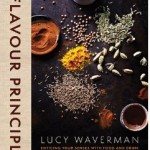
Every great dish has a centre of gravity, a flavour or essence that pulls together other ingredients into a coherent and compelling whole. Indian curry spices, fiery Thai chili peppers, lemony citrus, smoky barbecue rubs are all flavours that we adore and get our taste buds asking for more. Flavour is what makes us passionate about food and drink. The Flavour Principle, authored by Canadians Lucy Waverman and Beppi Crosariol, focuses on this fundamental concept. Organized around eleven distinctive tastes, from spicy to tart to bitter and beyond, it features more than thirty menus with complementary beverage pairings and covers flavours from all over the world.
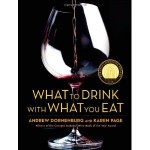
What to Drink With What You Eat, authored by husband and wife team, Karen Page and Andrew Dornenburg, is a comprehensive reference guide and perhaps the best food and drink pairing guide on the market. The book is extremely user friendly, with well indexed food and drink pairings, is thoroughly researched, with input and advice from top chefs and sommeliers, has terrific photography, is fun to read, and contains hundreds of potential food and drink pairing options. It also has an extremely capable advisory board composed of top chefs and sommeliers.
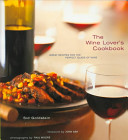
A glass of wine can be delicious, but when it is paired with the right dish, it can resonate in a magnificent way. This cookbook lets any cook plan a meal in perfect concert with a favorite or special wine. Mystified by the art of choosing a wine to go with your meal, or vice versa. Is white wine with fish the only rule you know. The Wine Lovers Cookbook is a unique guide for the wine lover and cook who considers wine an essential part of a meal and wants to understand the dynamic interplay between wine and food.
Author Sid Goldstein describes in detail the flavour profiles of thirteen popular grapes and explains which ingredients balance each wine, giving the reader a professional foundation for planning meals with each kind of wine. He also offers 100 recipes, from appetizers to desserts, specifically created to complement a particular grape. The Wine Lovers Cookbook is an essential reference and an inspiration for anybody who want to make the most of an excellent glass of wine.
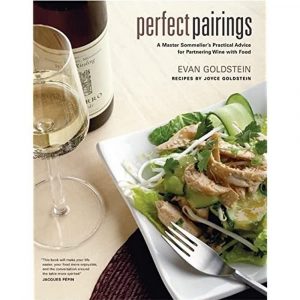 Perfect Pairings, by Master Sommelier Evan Goldstein provides straightforward, practical advice for how to pair wine with each meal. It acts as a guide to wine, wine terminology, and wine-growing regions as well as a cooking guide and includes 58 companion recipes developed by chef Joyce Goldstein that showcase each type of wine. It combines in-depth explorations of twelve grape varietals, sparkling wines, and dessert wines with guidance about foods that enhance the wide range of styles for each varietal.
Perfect Pairings, by Master Sommelier Evan Goldstein provides straightforward, practical advice for how to pair wine with each meal. It acts as a guide to wine, wine terminology, and wine-growing regions as well as a cooking guide and includes 58 companion recipes developed by chef Joyce Goldstein that showcase each type of wine. It combines in-depth explorations of twelve grape varietals, sparkling wines, and dessert wines with guidance about foods that enhance the wide range of styles for each varietal.
Whether the Chardonnay is earthy and flinty, or rich, buttery, and oak-infused; whether the Pinot Noir fruity and tropical, or aged and mature, Goldstein explains how to match it with dishes that will make the wine sing. His clear, educational, and entertaining approach towards intimidating gastronomical questions provides information for all readers, professional and amateur chefs alike.